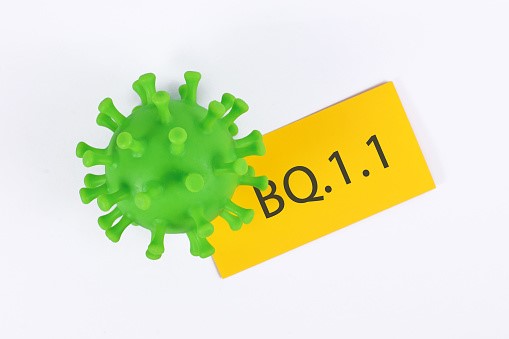All you should know about New COVID Subvariants


What’s going on
Cases of COVID are increasing across the US. Health officials are encouraging people to use masks indoors and on public transit in areas where the disease has spread more widely.
What’s at stake
There is still COVID-19 around. Most recent cases are caused by newer iterations of the omicron variety, and several therapies are now less successful as a result.
How it affects you
For individuals who are more likely to become seriously ill from COVID-19, antiviral medication is available. Testing ahead of large gatherings, donning a mask in public, and keeping up with your vaccination schedule will all help to keep you and others around you safe.
Health experts are advising people to wear masks indoors in some cities and states, including New York, Los Angeles, and Washington. In areas with high COVID-19 levels, which includes a rising number of individuals as winter approaches, the US Centers for Disease Control and Prevention advise wearing masks indoors and on public transit.
According to statistics gathered by The New York Times and the US Centers for Disease Control and Prevention, COVID-19 instances are once again increasing in the US. However, this increase is not solely attributable to COVID-19. We are also experiencing an increase in RSV cases and are in the midst of an abnormally severe flu season.
The CDC’s most recent estimate states that variants BQ.1 or BQ.1.1 are currently responsible for around 68% of COVID-19 cases in the US. Both are omicron subvariants, which have been tightly controlling the earth since last winter.
The extremely contagious omicron subvariant BA.5, which this summer and fall led to many reinfections or new infections in individuals who had not previously contracted COVID-19, is waning and currently only accounts for 14% of cases.
We’ve come to terms with the fact that viruses like COVID-19 can change. But not all mutations are equal, which is why researchers are observing how this winter’s abundance of omicron forms, which also includes a high number of influenza viruses
The number of deaths from COVID-19 is down significantly when compared to past COVID-19 waves, despite an increase in cases and hospitalizations. However, between 250 and 350 individuals continue to die from COVID-19 every day. However, it appears that the steadiness we experienced this fall is winding down.
BQ.1 and BQ.1.1, what are they?
The omicron variant, a “variant of concern,” originally surfaced last winter and was responsible for a large-scale outbreak of COVID-19 infections. The more recent variants BQ.1 and BQ.1.1 are this. The World Health Organization claims that BQ.1 is specifically related to BA.5 and has a few more alterations. BQ.1.1 should be closely monitored because it has an additional important mutation.
Omicron, delta, alpha, and earlier strains of COVID-19 were accorded their own Greek alphabet tags and independent distinction as variants of concern as they were bothersome enough to researchers in the way they avoided vaccine protection, produced more severe disease or caused more serious issues. Contrarily, according to the classification reasoning, BA.5 did not require a significant enough shift in our public health response to receiving its own name from the WHO, despite the fact that it was highly contagious and led to increased reinfections in patients who previously had COVID-19.
Will they be resistant to medications and vaccines?
According to information from the National Institutes of Health, monoclonal antibody therapies, including Evusheld for immunocompromised individuals, will probably no longer be effective against BQ.1 or BQ.1.1. Eli Lilly’s monoclonal antibody bebtelovimab, which is ineffective against the currently dominant subvariants of COVID-19, had its US FDA approval canceled on November 30. Earlier in the pandemic, other monoclonal antibody medicines were taken off the US market because the virus rendered them useless.
There is no reason to believe Paxlovid, an antiviral medication for use in the first few days of illness in higher-risk patients, won’t be effective against the more recent types of omicron.
The new, updated boosters, which are modified formulations intended to target the BA.5 subvariant in addition to the “original” version of the virus, will provide how much protection against BQ.1 and BQ.1.1? Earlier this month, Moderna reported that a limited analysis revealed a “robust” antibody response to BQ.1.1, despite the fact that antibody titers were around five times lower than they were for BA.4/BA.5, Moderna stated. Early studies do indicate that the bivalent boosters are more efficient at neutralizing BQ.1.1 than the primary immunizations.
Although there is some debate over how much better the new boosters are than the original formulations at protecting people, boosters and vaccines in general have prevented serious illness and death throughout the pandemic and across viral mutations. Some scientists have even called for a new approach to vaccines in general. Compared to people 18 and older who were up to date on their vaccinations, adults who were unvaccinated had a mortality rate from COVID-19 that was over five times higher in August.
This article’s information is not meant to be taken as health or medical advice; rather, it is meant for educational and informational reasons only. If you have any concerns about a health objective or a medical issue, always seek the advice of a doctor or other trained health expert.
See also: how much water should you drink a day



